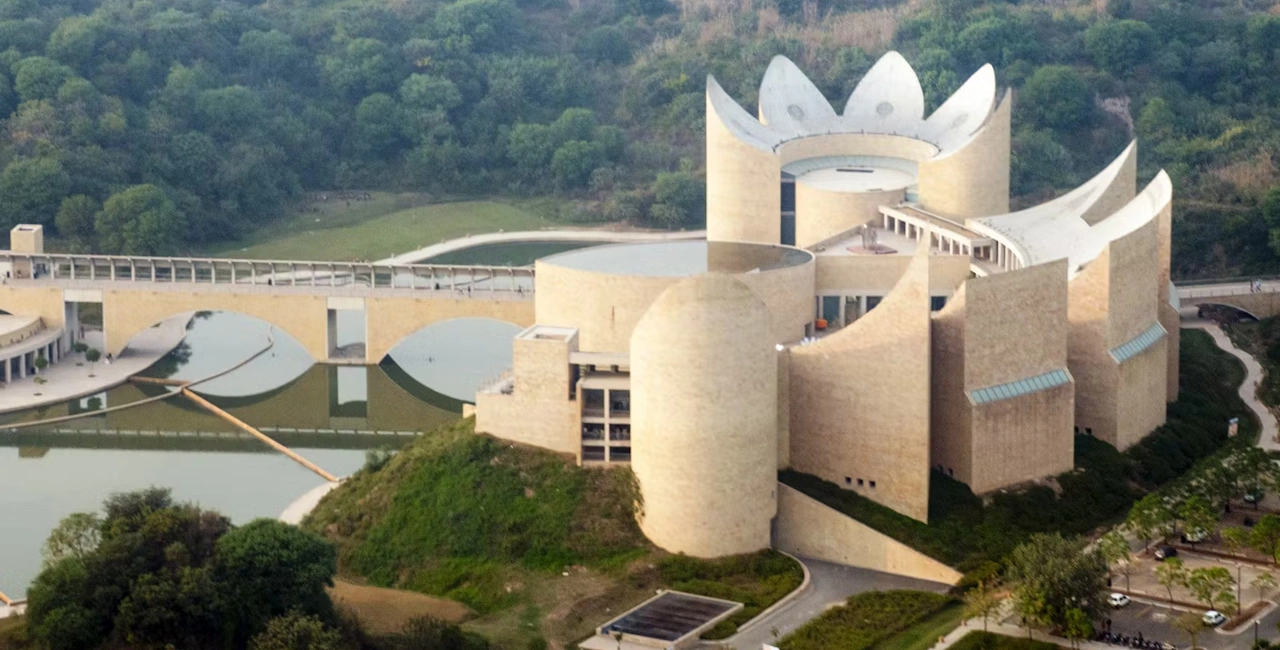Nestled in the historic town of Anandpur Sahib, Punjab, Virasat-e-Khalsa is a world-renowned museum that celebrates the rich history, culture, and spiritual legacy of Sikhism. Opened in 2011, this architectural marvel has not only become a beacon of Sikh identity but also a global attraction for history enthusiasts and art lovers. Designed by Israeli architect Moshe Safdie, Virasat-e-Khalsa seamlessly blends modern design with the profound storytelling of Sikh history.
Vision and Purpose
Virasat-e-Khalsa was conceived to commemorate 300 years of the Khalsa Panth, founded by Guru Gobind Singh in 1699. The museum stands as a tribute to the Sikh Gurus, their teachings, and the sacrifices made by countless Sikhs to uphold justice and equality. It seeks to educate visitors about Sikhism’s core principles while preserving the cultural and historical narrative for future generations.
The museum is not merely a repository of artifacts; it is a journey through time that narrates the evolution of Sikhism and its impact on society. It honors the resilience and spirituality of a community that has significantly contributed to the cultural and social fabric of India.
Architectural Brilliance
Virasat-e-Khalsa is an architectural masterpiece that blends traditional Punjabi motifs with contemporary design elements. Spread over 100 acres, the complex is surrounded by water pools, symbolizing purity and serenity. Its structure is divided into two main complexes connected by a ceremonial bridge, resembling a fortress on the outside but offering a spiritual sanctuary within.
The museum’s architecture is designed to harmonize with the surrounding Shivalik Hills, using local materials and incorporating elements of Sikh symbolism. The crescent-shaped roofs represent the Sikh kirpan (sword), a key symbol of faith and valor. Inside, natural light floods the galleries, creating an ambiance that complements the spiritual essence of the exhibits.
Interactive Exhibits and Galleries
One of the most striking aspects of Virasat-e-Khalsa is its state-of-the-art exhibits. The museum uses cutting-edge technology, including audio-visual presentations, immersive displays, and life-like dioramas, to narrate the story of Sikhism. Visitors embark on a chronological journey, beginning with the birth of Guru Nanak, the first Sikh Guru, and concluding with the establishment of modern Sikh identity.
The galleries are divided into multiple phases:
- Early Sikhism: The museum introduces visitors to the life and teachings of Guru Nanak and the foundational principles of Sikhism, including equality, humility, and devotion.
- Growth and Challenges: The subsequent galleries explore the contributions of other Sikh Gurus, highlighting the spiritual, social, and military transformations they brought about.
- The Khalsa Panth: A key section is dedicated to Guru Gobind Singh and the creation of the Khalsa, showcasing its significance in Sikh history.
- Modern Sikhism: This segment focuses on the contributions of Sikhs to India and the world, emphasizing their role in education, agriculture, and social reforms.
The museum also houses rare manuscripts, relics, and artifacts, each meticulously displayed to give visitors an authentic glimpse into Sikh heritage.
Cultural and Spiritual Significance
Beyond its historical narrative, Virasat-e-Khalsa serves as a spiritual and cultural hub. For Sikhs, it is a place of inspiration and pride, reminding them of their rich legacy and the teachings of their Gurus. For non-Sikhs, the museum offers an opportunity to learn about the faith, its universal values, and its contributions to humanity.
The Virasat-e-Khalsa is also a site for cultural exchange, hosting events, workshops, and educational programs that foster a deeper understanding of Sikh culture and traditions.
Visitor Experience
Since its inauguration, Virasat-e-Khalsa has drawn millions of visitors from across the globe. The museum’s interactive and narrative approach appeals to all age groups, making it a favorite among students, scholars, and families. Guided tours and multilingual audio guides enhance the experience, ensuring that visitors from diverse backgrounds can engage with the exhibits.
The lush green surroundings, reflective pools, and serene ambiance make the museum not just an educational destination but also a tranquil retreat.
Global Recognition
Virasat-e-Khalsa has received numerous accolades for its innovative design and cultural impact. It holds the distinction of being one of the most-visited museums in India and has earned recognition for its sustainable architecture and unique storytelling methods.
Conclusion
Virasat-e-Khalsa is more than just a museum—it is a living narrative of the Sikh spirit. Its blend of history, culture, and spirituality offers a transformative experience that resonates with visitors long after they leave. For anyone seeking to understand the essence of Sikhism or explore its profound heritage, Virasat-e-Khalsa stands as an unparalleled destination.
Through its grand design and compelling exhibits, it continues to inspire and educate, ensuring that the legacy of Sikhism shines brightly for generations to come.


0 Comment